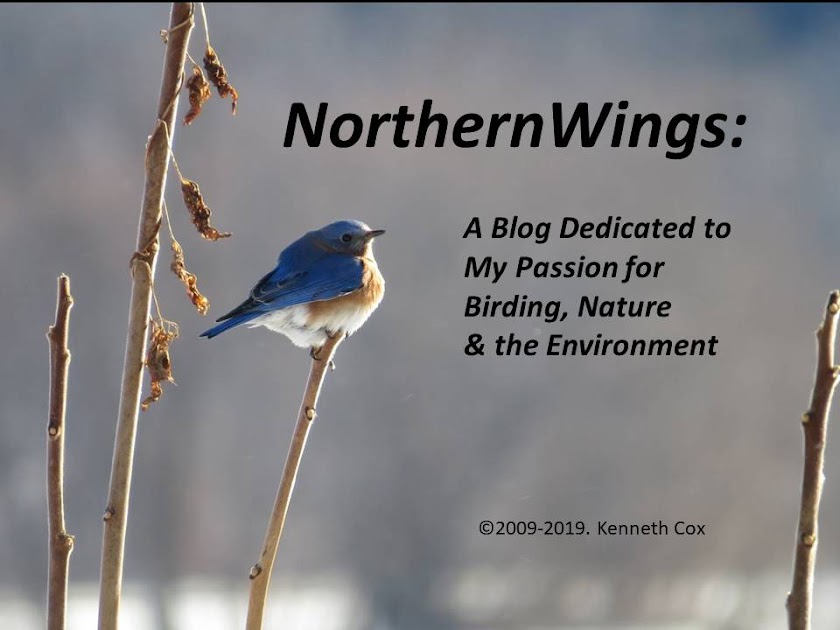On March 13 a Redwing (
Turdus iliaca) was discovered by Christopher McPherson in Hollis, New Hampshire. To describe this bird as "super rare" is by no means an over-exaggeration being this sighting is only the fifth record for the "Lower 48" of the U. S., an ABA Code 4 species, and perhaps a first for the state. Previous accepted sightings are from New York, 1959, the first North American record; Washington, 2004; Pennsylvania and Rhode Island, both in 2005. Sightings are a bit more numerous from eastern Canada, particularly the Maritime Provinces. In addition to the Washington state record, there is one record each from Alaska, 2011, and British Columbia, 2016.

The Redwing is an Eurasian species with a breeding range that spans from the southern tip of Greenland east through Iceland, the Faeroe Islands south to northernmost Scotland, through Scandinavia, the Baltic States, northern Poland and Belarus, northern Russia and to the Kolyma of the Russian Far East. Its winter range is southern Eurasia and northern Africa. Two subspecies are recognized: Eurasian (
Turdus i. iliaca) and Icelandic (
Turdus i. coburni). It seems reasonable that most if not all western North American sightings are the Eurasian subspecies and those from the East are the Icelandic.
Getting back to the New Hampshire bird, it was found in the company of American Robins (
Turdus migratorius) which were present in astounding numbers (perhaps conservatively in the high 100s) frequenting the several athletic fields and brushy edges at Hollis-Brookline High School. So for Christopher to pick out one Redwing out of the hordes of robins is a testament to his meticulous patience and/or luck. Whatever it may be, kudos to him for this very special find and his promptly getting the news out to the birding community. As would be expected birders from throughout the Northeast and beyond converged on the location and for the most part the bird failed to disappoint. I made the trip with a friend early Tuesday morning in a misty rain. Arriving at the school a few minutes after 7:00 a.m. about a dozen hopeful birders had already staked out the fields but with no sighting of it up to that point. We checked out several fields, most dotted with robins, checking them out one by one. The robins tended to be a bit unsettled and easily spooked causing many to take cover in the thick brush and others flying off elsewhere. In such a maelstrom, frankly we each thought our chances of seeing the Redwing were a long shot.
The numbers of birders steadily increased to as many as 50 or more, when the thrush was spotted on the ground in the brushy edge behind the chain link fence that formed the backdrop of the track field. Those that had their binoculars, spotting scopes and cameras on the bird barked out directions to others not yet on it. Eventually the thrush moved out onto the grass next to the track providing everyone in attendance with great views and photo opportunities. Seeing a birder without a smile was nearly as rare as the "guest" thrush. Satisfied we headed back to Vermont only to learn on eBird that a Varied Thrush (
Ixoreus naevius), a bird of the Pacific Northwest, was in Merrimack, one town north of Hollis. Oh, well.
The Redwing continued to be seen off and on through March 17. Reports state, robins remain in abundance and considering there is so much habitat suitable to them (fields, lawns, brushy hedgerows, etc.) in the neighborhood, it may very well continue to be in the area. Relocating it will require perseverance, sorting through robin flocks, and of course luck.
 |
| American Robin, left; Redwing, right. |
 The Redwing is an Eurasian species with a breeding range that spans from the southern tip of Greenland east through Iceland, the Faeroe Islands south to northernmost Scotland, through Scandinavia, the Baltic States, northern Poland and Belarus, northern Russia and to the Kolyma of the Russian Far East. Its winter range is southern Eurasia and northern Africa. Two subspecies are recognized: Eurasian (Turdus i. iliaca) and Icelandic (Turdus i. coburni). It seems reasonable that most if not all western North American sightings are the Eurasian subspecies and those from the East are the Icelandic.
The Redwing is an Eurasian species with a breeding range that spans from the southern tip of Greenland east through Iceland, the Faeroe Islands south to northernmost Scotland, through Scandinavia, the Baltic States, northern Poland and Belarus, northern Russia and to the Kolyma of the Russian Far East. Its winter range is southern Eurasia and northern Africa. Two subspecies are recognized: Eurasian (Turdus i. iliaca) and Icelandic (Turdus i. coburni). It seems reasonable that most if not all western North American sightings are the Eurasian subspecies and those from the East are the Icelandic.

